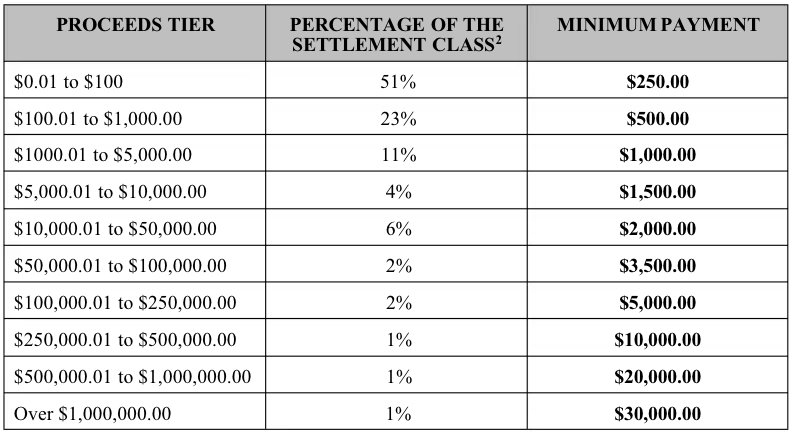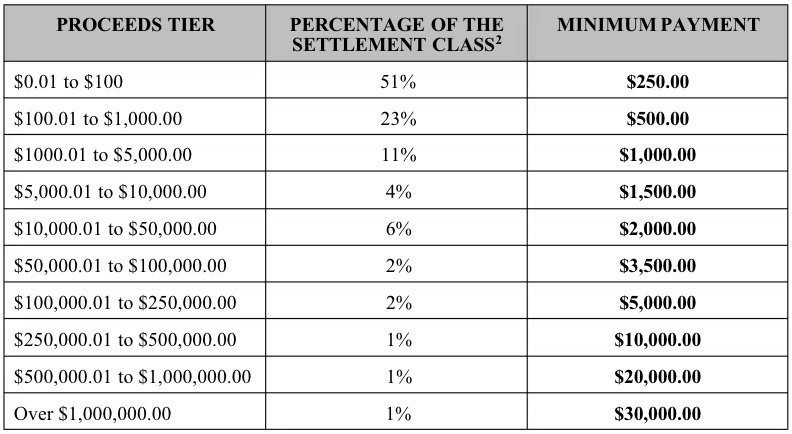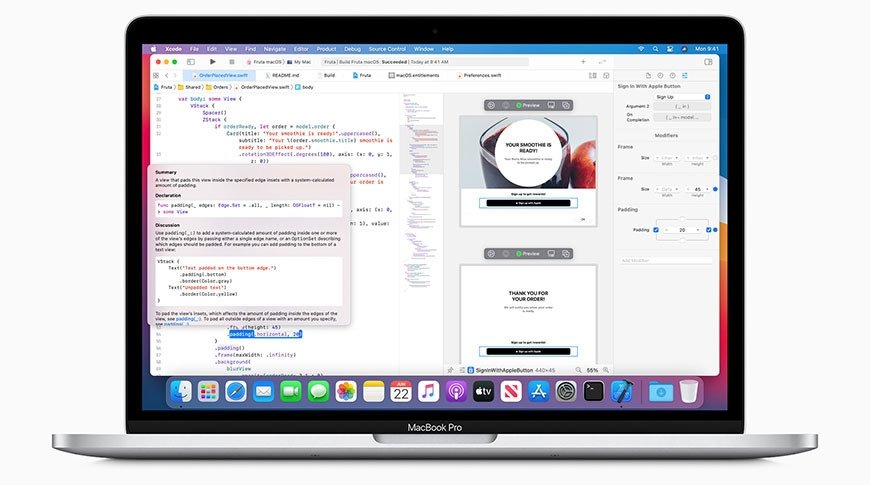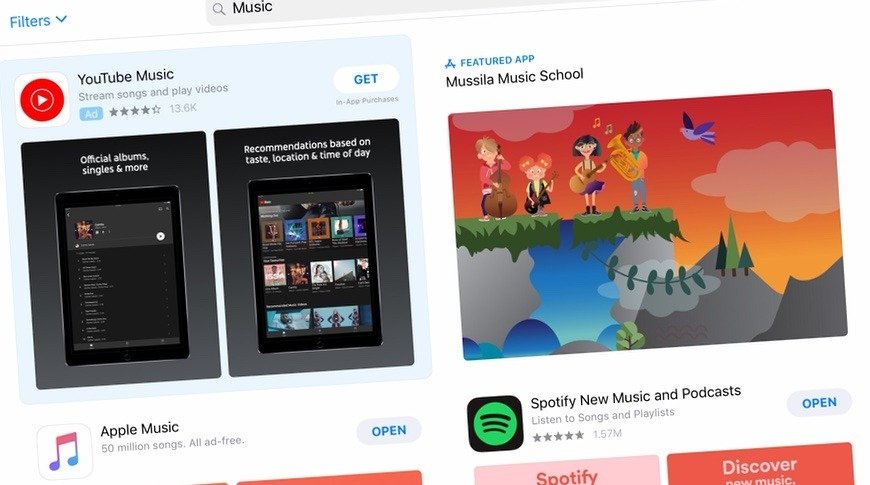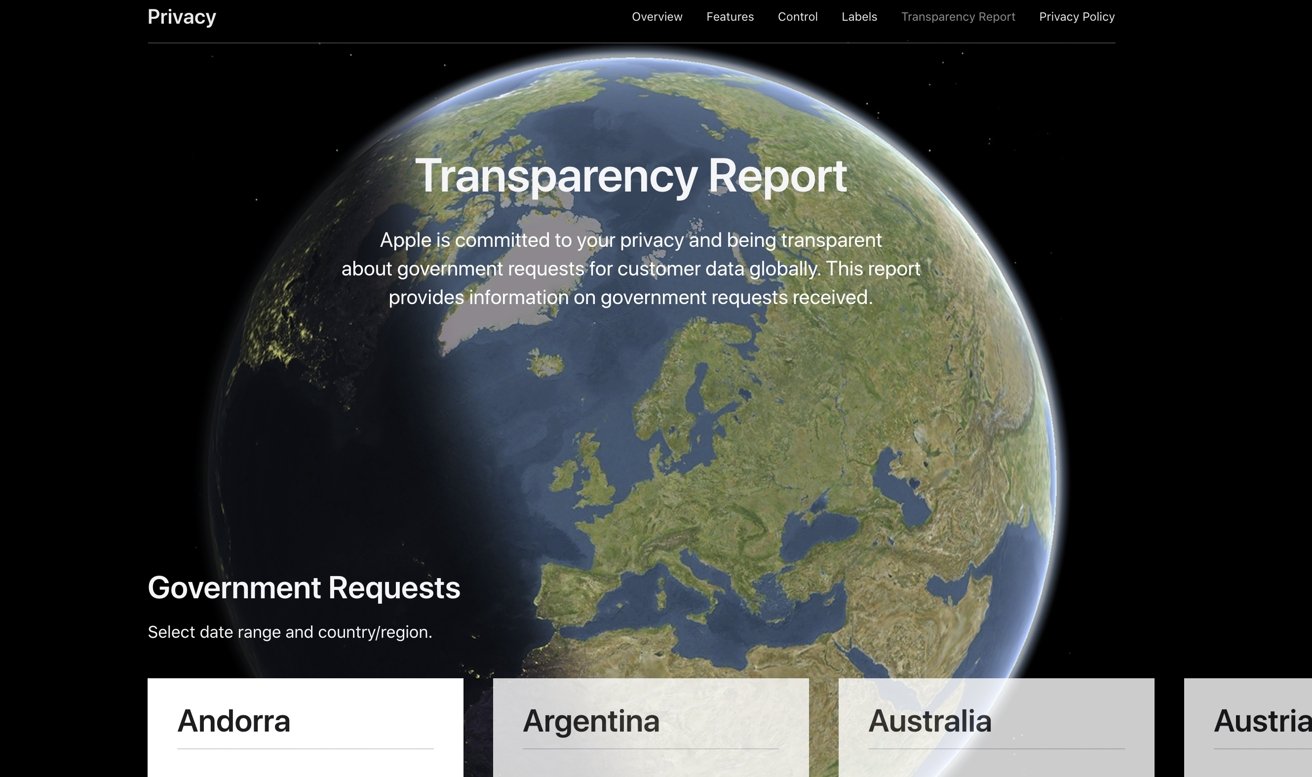Apple’s settlement to end a lawsuit promised a payday and improvements to the way developers are treated in the App Store, but on closer inspection, it seems the concessions are literally the least Apple could do to end the complaint.
On August 27, Apple announced it had reached an agreement to end a lawsuit by U.S. developers concerning App Store policies. The lawsuit, which originated in 2019, accused Apple of using massive monopoly power against developers, including imposing “profit-killing” App Store commissions and fees.
The fee in question wasn’t just the 30% Apple took from App Store transactions, but also the $99 that developers pay to be in the Apple Developer Program. The lawsuit also took Apple to task about its pricing tiers, in that Apple requires app prices to be at specific levels, but developers wanted more options than what Apple offered.
From the outset, Apple’s issuance of a press release proclaiming it to be a win for developers, one that will “support businesses” as part of “Apple’s longstanding efforts to evolve the App Store into an even better marketplace for users and developers alike.”
Despite the claims, the settlement itself isn’t final, as it is still a proposal that has to be signed off by Judge Yvonne Gonzalez Rogers before the changes can be implemented.
The settlement arrives at a time when the App Store faces considerable scrutiny, in part driven by the continued wait for a result in Apple’s lawsuit against Epic Games. Given the interest, a closer examination of the settlement terms is warranted, especially considering how much it will supposedly improve the lives of developers.
$100 Small Developer Assistance Fund
The most attention-grabbing element of the settlement is the establishment of a $100 million Small Developer Assistance Fund, $30 million of which went to the lawyers. Intending to help small developers in the United States, firms who earned $1 million or less annually across all of their apps between June 4, 2015, and April 26, 2021 can claim against the fund.
The payout structure starts from $250 for those earning $100 or less from the App Store, with the figures gradually rising in value to $30,000 for those exceeding $1 million in revenue.
In the settlement, it is stressed that the values are minimums, based on “if every member of the Settlement Class submits an approved claim.” Realistically, not all developers will apply for the payout, with estimates putting the claim rate at around 35%, so the amounts will increase “proportionally in each tier” depending on the number of request funds.
Even so, it seems that not all of the value of the fund will go to developers. At least 30% of the figure will be heading towards attorneys’ fees, as the proposal says such requests will be paid out of the fund directly.
For Apple, the fund is a great PR move at relatively minimal cost, as it gets to trot out the claim it is helping developers with its creation. The $100 million figure even sounds great, though realistically, it is around $70 million being paid out once rather than an ongoing assistance measure.
Add in that the App Store is part of Apple’s Services business, and that it reported 33% revenue growth to $17.5 billion in its Q3 2021 results, and the $100 million outlay suddenly seems extremely minimal.
At face value, $100 million is a lot to many people, including developers. If the intended message was “Apple hands a lot of money over in a fund to help developers,” it certainly met the criteria, but did so relatively cheaply, given Apple’s scale.
However, If you look beyond the headline $100 million figure, you’ll see that same resistance to offer meaningful concessions elsewhere in the settlement.
Small Business Program
The start of the “important and valuable structural relief” section is an insistence Apple will continue running its Small Business Program for “at least three years after Final Approval.”
The Small Business Program provides developers who earn less than $1 million from the App Store a reduced commission rate, from the famous 30% cut to a mere 15%. Once a developer hits the milestone $1 million, the 30% cut comes back into play.
At its launch, the program was warmly welcomed by developers standing to benefit from improved revenue levels. After all, it’s not every day that a supplier is willing to halve the cost of doing business to a client.
The problem with this element is that it may not even be much of a concession by Apple at all.
So far, Apple has not yet made any indication that it will shutter the program in the future. For all anyone knows, it could be a program that Apple intends to continue operating for many years as an ongoing effort to encourage developer growth.
If so, Apple promising to keep it active for another three years is an extremely low-effort change on its part.
That said, the settlement claims there’s still some benefit to developers in the form of “providing invaluable business planning revenue.” There’s even the claim the commitment will save U.S. developers some $177.2 million in commissions over the three-year period, though that’s a saving that could’ve been made anyway.
Developer communications with customers
The anti-steering provisions of the App Store Guidelines have been an issue for many years, with developers unhappy at not being able to direct users in ways to subscribe or pay for services away from Apple’s payment systems.
In the settlement, Apple agrees to revise its guidelines to allow developers to “communicate with consenting customers outside their app, including via email and other communication services, about purchasing methods other than in-app purchase.” In short, developers will be able to tell users they can pay for services elsewhere and receive them in the app.
Technically, the existing rules allow developers to tell app users about the alternate payments, but they cannot do so within the app itself. Nor can developers get in touch with users to do so using information gleaned from the user data supplied to the app, such as an email address.
In June, along with other changes to the App Store Guidelines, Apple tweaked the rules to allow developers to communicate more freely with users outside of the app, such as with user-submitted emails, but still prevented the discussion of alternative payment avenues in those emails.
The proposed settlement certainly is beneficial to developers in that they can contact known app users outside of the app to tell them about other ways to pay to get around Apple’s transaction fee.
However, it still prevents developers from telling users of the same alternates from within the app itself.
This isn’t a massive danger to Apple’s revenue, as app users are more likely to pay via the most convenient and apparent mechanism to them, which would be in-app payments.
Certainly, it’s a concession, but by no means is it anywhere as damaging to Apple’s finances as the prospect of being forced to allow in-app alternate payment systems, such as the version that got “Fortnite” kicked“Fortnite” kicked from the App Store.
Discoverability
For three years after approval, Apple will “conduct robust experimentation to drive continuous improvement” in App discoverability, the settlement reads, including in ways that will “give new and high-quality apps a chance to be found.”
In Apple’s statement, this is clarified to mean the App Store Search results will “continue to be based on objective characteristics like downloads, star ratings, text relevance, and user behavior signals.”
In plain terms, Apple says it will keep using metrics it already employs to determine what apps surface in searches. Apple will also continue to work on ways to make new apps more discoverable by users.
Like the Small Business Program, there’s not much of a change here.
Apple will continue to make changes to the App Store Search over time, such as its addition of search suggestions in April, as it has a vested interest to do so. It needs to help users find the app they are looking for, otherwise it’s a missed opportunity to earn commission from a sale.
Again, it’s less of a concession, more an affirmation that business will continue as normal.
Pricing tiers
Due to the nature of apps being sold around the world in many different currencies, Apple doesn’t allow apps to set highly customized pricing for apps or in-app purchases. Instead, developers have to choose from specific price tiers, preset at certain levels, such as $0.99 or $1.99, and are similarly reflected in other currencies.
However, while Apple provides close to a hundred different price levels for developers to choose from, developers feel there aren’t enough choices. For example, a price could be $1.99 or $2.99, but not $2.49.
To answer the problem, the settlement says Apple will increase the number of pricing tiers up to “more than 500.”
This isn’t quite the ability for developers to set their own specific pricing down to the penny, but it should give considerably more options for what prices to charge consumers.
The change is a bit more work for Apple, as employees managing inter-currency pricing levels now have far more tiers to manage, but not an insurmountable one.
As for when to expect the new tiers, the settlement says they will be implemented “by December 31, 2022” at the latest. This gives Apple practically a year and a half to do something that shouldn’t really take that long to put into practice.
App Review appeals
Citing developer concerns that App Review standards “are not always applied fairly or in a consistent manner,” the proposal says Apple will produce new content for its App Review website to explain the appeals process itself.
On the one hand, this can be useful to developers, as it was revealed during the Epic trial that less than 1% of App Store rejections are actually appealed by developers. It’s likely that the additional text could raise awareness to developers that there’s an actual appeals process to follow, and possibly to ease concerns of it being a waste of time for some.
On the other, it’s something that is kind of expected from Apple anyway. An explanation of a process that could affect the livelihood of a developer is something that should be provided where warranted, and if Apple wants more to use the system, it should freely offer that information anyway, regardless of whether a lawsuit prompted it.
The requirement to maintain the review process and the extra documentation for three years isn’t really much to write home about.
Yet again, it is a relatively simple thing for Apple to implement as a concession. While there will be an explanation of the process, it crucially won’t make changes to the process itself.
Developers critical of the App Review process, such as Hopscotch CEO Samantha John who in August called it “Kafkaesque” following an unwarranted rejection, will continue to push Apple to make changes to the process.
But for the moment, such a declaration of change is noticeably absent.
Transparency reports
Connected to the App Review process, Apple intends to provide data back to developers on those rejections.
A “transparency report” will provide “meaningful statistics on the number of apps rejected and reasons why,” as well as the “number of customer and developer accounts deactivated” and “objective data” for search queries and app removals.
“These data points will provide developers with better insight into Apple’s App Store review, rejection, and search functions,” the settlement proposal reads.
Apple already produces transparency reports for privacy. Doing so for App Store rejections seems like a logical step.
This concession falls into the category of “things that should already be offered by Apple” due to its potential to educate developers. If there’s data on the most common reasons for rejection, developers could use that information to inform their own pre-submission processes so they don’t fall into the same trap.
The importance of data points to a business cannot be understated, as it always helps with planning. It just makes sense for Apple to freely hand this information to the people who help make the platform what it is with their creations.
“Concessions” and timing
The settlement proposal and the accompanying press release certainly read as if Apple is doing developers a big favor. A hefty sum of money being thrown in the direction of developers in the United States, more pricing options, an insistence to maintain the Small Business Program for another three years, and an attempt to better educate developers on appeals sounds like a lot.
If you look at it from Apple’s position, where it has to give things up, it’s not really that much at all. For example, the settlement fund is less than 1% of Apple’s Services revenue in its most recent quarter.
Documentation about the App Store review process? Saves it from having to make actual improvements to the process itself. Changes to pricing tiers? Trivial.
Even the ability for developers to tell app users in emails about alternate payment methods isn’t that damaging to Apple’s bottom line, given the users are already using the apps in the first place. The path of minimal friction is in-app payments, which is hard for alternates to compete against.
Apple has, realistically speaking, given up very little to developers in this settlement in exchange for what could be perceived as a lot of goodwill.
The settlement may also be a means to try and appease Judge Gonzalez Rogers. As the judge has yet to offer her ruling on the Epic trial, which she is also presiding over, Apple’s settlement could be considered an attempt to show a willingness to keep developers happy, but without going as far as Epic Games wants to go.
A ruling requiring Apple to enable third-party app stores or alternate payment systems could be extremely damaging to the company, far more than Apple gave up for this settlement.
This hasn’t gone unnoticed by Epic. The Coalition for App Fairness, initially funded by Epic Games, was quick to call the settlement proposal a “sham” and “nothing more than a desperate attempt to avoid the judgment of courts, regulators, and legislators worldwide.”
If Judge Gonzalez Rogers allows the settlement to stand in its current state, Apple may get away from a lawsuit that could have been extremely expensive to put right.
To Apple, at least, this will be a fantastically cheap deal.

